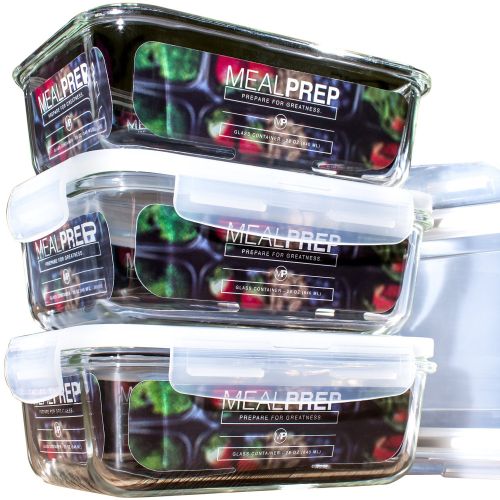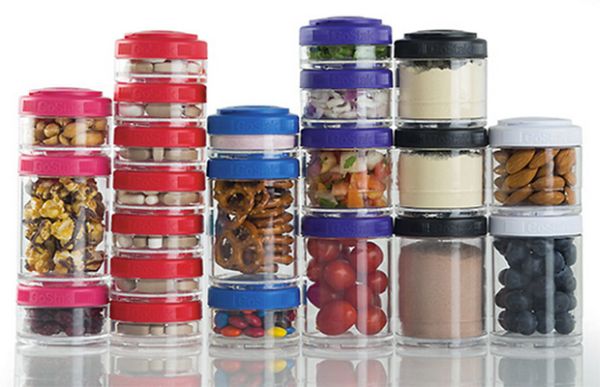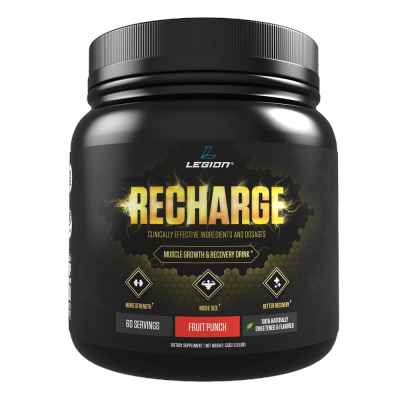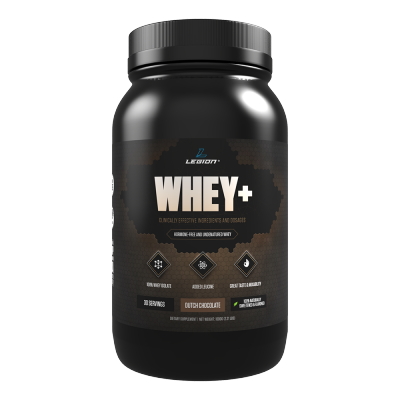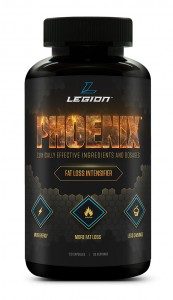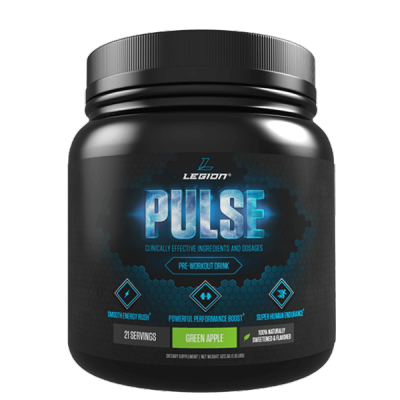You’ve seen the pictures on Instagram.
Pretty people with their pretty little cartons of “clean” and colorful foods.
“I wish I could do that,” you’ve probably thought.
Or maybe “I wish they would come to my house and do it for me.”
The problem isn’t that you need to be sold on the benefits of meal prepping.
You don’t need to be reminded that it can…
- Save you money.
- Save you time.
- Enables you to lose or gain weight as desired.
- Allow you to eat foods you like every day.
You want to meal prep…but you’re just not sure where to start.
Or maybe you’ve tried and wound up confused, frustrated, or overwhelmed, and quit.
Well, this article is going to get you back on track.
In it, you’re going to learn everything you need to know about diet and meal prepping to make effective, enjoyable, and economical meal plans that make losing fat and building muscle a breeze.
Let’s get started.
Table of Contents
+
The Benefits of Meal Prepping

You’ve probably heard cliches about how important diet and nutrition is when it comes to getting fit.
Some people say it’s 70% of the game. Others say it’s 80% or even 90%.
Well, I say it’s 100%.
And lifting heavy weights, overloading your muscles…that’s also 100%.
Being properly hydrated is 100%, too.
We can’t forget about having the right attitude, either. That’s 100%.
(Yeah, we’re at 400 percent so far…)
My point is this:
The building blocks of a great body are more like pillars than puzzle pieces. Weaken one enough and the whole structure collapses.
This is why many people meal prep.
It’s the most surefire way to make your diet work for and not against you.
There are several reasons for this.
1. Meal prepping allows you to tightly control your caloric and macronutrient intake.
If you eat too much, you’ll fail to lose weight (or you’ll gain weight too quickly).
If you eat too little, you’ll hate your life and probably harm your body composition.
Get food intake right, though, and you can build muscle and lose fat with ease.
2. Meal prepping allows you to eat the foods you like (without overeating).
“The best diet is the one you can stick to.”
There’s a lot of truth in that saying.
And if you’re like most people, you have a hard time sticking to a restrictive diet of bland, boring food.
Fortunately, you don’t have to choose between the body you’d like and the foods you love.
You can have both.
3. Meal prepping allows you to eat on a schedule that suits you.
Increasing or decreasing meal frequency doesn’t help or hinder your results per se.
That said, it can make a diet easier or harder to stick to, which will ultimately influence your results.
That’s why you should eat as frequently or infrequently as you prefer.
For example, if you prefer to skip breakfast and eat 3 large meals per day, then that’s what you should do.
If, on the other hand, you prefer to eat lightly throughout the day and feast at night, that works too.
The bottom line is this:
The biggest benefit of meal prepping is knowing that your diet is 100% on point.
This guarantees results, which motivates you to continue, which gets further results, and so on. This positive feedback loop can be quite powerful.
So, now that you know what a meal prep can do for you, let’s learn how to actually do it.
The Perfect Meal Prep Step 1
Figure Out Your Calories & Macros

The cult of “clean eating” is more popular than ever these days.
And while it has its heart in the right place, it misses the forest for the trees.
What most “clean eaters” don’t realize is the nutritional value of food has little effect on your body composition.
That is, “clean” foods don’t make you lean and “dirty” foods don’t make you fat.
Yes, you certainly need to eat plenty of nutritious foods to stay healthy, but individual foods can’t directly cause weight loss or gain.
Sugar isn’t your waistline’s enemy and “healthy fats” aren’t its savior.
This is why Professor Mark Haub was able to lose 27 pounds on a diet of protein shakes, Twinkies, Doritos, Oreos, and Little Debbie snacks.
And why “flexible dieting” is getting more and more popular.
The key to understanding these “blasphemous” statements is understanding two things:
- Energy balance
- Macronutrient balance
Let’s review each.
Understanding Energy Balance

“Energy balance” is the most basic fundamental of dieting that you must understand if you’re to get results.
It dictates your weight gain and loss more than anything else.
What is it, though?
Energy balance is the relationship between the energy you feed your body and the energy it expends.
Modern science has accumulated a century of metabolic research, and here’s what we know:
- Meaningful weight loss requires you to expend more energy than you consume.
- Meaningful weight gain (both fat and muscle) requires the opposite: more consumption than expenditure.
Now, if you’re shaking your head, thinking I’m drinking decade-old Kool-Aid , answer me this:
Why has every single controlled weight loss study conducted in the last 100 years…including countless meta-analyses and systematic reviews…concluded that meaningful weight loss requires energy expenditure to exceed energy intake?
Why have bodybuilders dating back just as far…from Sandow to Reeves and all the way up the line…been using, and continue to use, this knowledge to systematically and routinely reduce and increase body fat levels?
And why do new brands of “calorie denying” come and go every year, failing to gain acceptance in the weight loss literature?
The bottom line is many hundreds of metabolic studies have proven conclusively that energy balance, operating according to the first law of thermodynamics, is the basic mechanism that regulates fat storage and reduction.
Now, that doesn’t mean you have to count calories to lose weight. You don’t.
But it does mean you have to understand the relationship between calorie intake and expenditure and weight gain and loss.
This is why claims that some foods are “better” than others for losing or gaining weight are misleading.
As you know, foods don’t have any special properties that cause weight loss or gain.
What they do have, however, are varying amounts of calories and varying types of macronutrient profiles (which we’ll talk about in a minute).
These two factors of calories and “macros” are what make certain foods more conducive to weight loss or gain than others.
Notice I said conducive to and not “best.”
And that’s because if you know how to regulate and balance your food intake properly, you can eat just about anything and lose or gain weight.
Understanding Macronutrient Balance
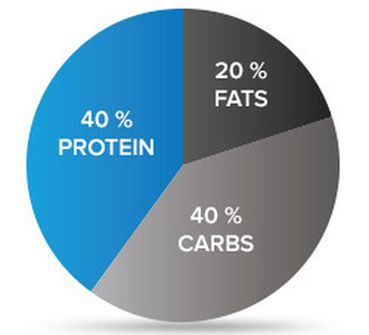
You’ve probably heard that “a calorie is a calorie.”
You’ve probably also heard that statement is relic of the “dark ages of dieting,” and that modern science has conclusively proven it false.
Well, the truth isn’t as black and white.
As far as your weight goes, a calorie is a calorie.
Eat too much of anything–even organic, non-GMO, gluten-free, sugar-free vegetable goop–and you will gain weight.
Maintain a calorie deficit while on a “gas station diet” of the most nutritionally bankrupt crap you can find, and you will lose weight.
As far as your body composition goes, though, a calorie is not a calorie.
That is, when you want to improve your body composition by gaining muscle and/or losing fat (and not muscle), where you get your calories from matters.
You see, people say they want to lose or gain “weight,” but that’s not what they mean.
The goal is never to just lose or gain weight. It’s to lose fat and not muscle and gain muscle and not fat.
And when that’s the goal, some types of calories are now much more important than others.
The specific foods you eat aren’t the key here. How they break down macronutritionally is what matters most.
And by that, I mean how much protein, carbohydrate, and fat they contain.
Let’s see why.
The Most Important Macronutrient: Protein
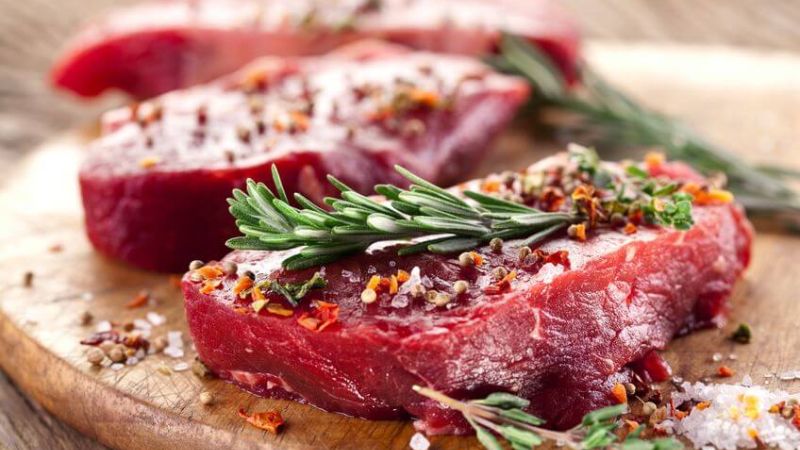
If you want a strong, lean body that you can maintain with ease, then you want to make sure you’re eating enough protein.
There are quite a few reasons for this, but here are the highlights:
- A high-protein diet is more effective for building muscle.
- Protein helps preserve muscle while restricting calories for fat loss.
- A high-protein diet is more effective for reducing body fat, including abdominal fat in particular.
- Protein increases satiety (fullness), which helps prevent overeating.
Your protein intake is particularly important if you’re exercising regularly because this further increases your body’s need for it.
Why You Should (Probably) Eat a Lot of Carbs
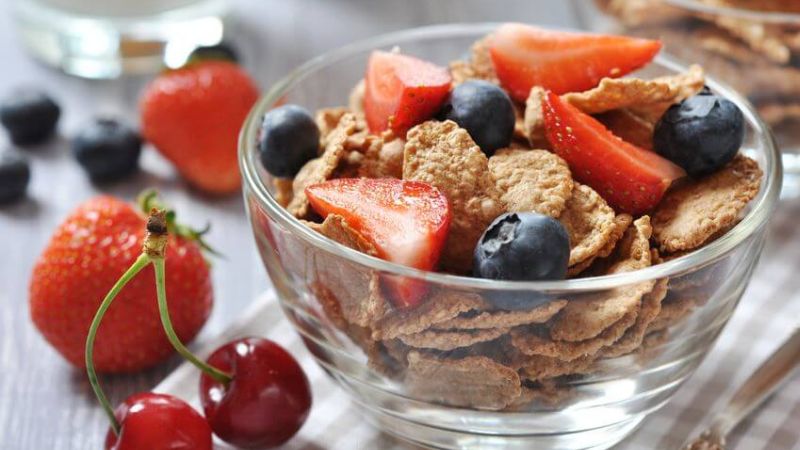
Many health and fitness authorities claim that low-carb dieting is the way of the future.
Many others rail against it as just another fad.
Many still are in the middle saying “it depends…”
Well, here’s my position:
If you’re healthy and physically active, and especially if you lift weights regularly, you’re probably going to do best with more carbs, not less.
There are exceptions, of course, but that holds true for the vast majority of people, regardless of age, gender, genetics, or training experience.
How Many Grams of Fat Per Day?
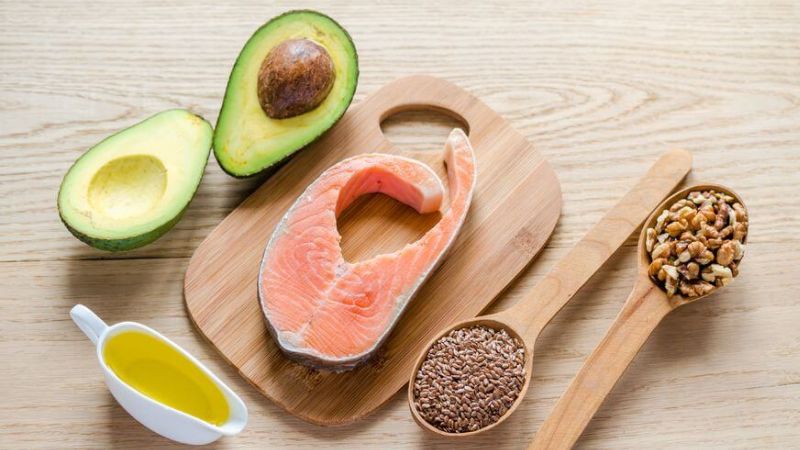
Your body needs a certain amount of dietary fat to support vital physiological processes related to cell maintenance, hormone production, insulin sensitivity, and more.
This is why, according to the Institute of Medicine, adults should get 20 to 35% of their daily calories from dietary fat.
These numbers are echoed throughout the fitness space, but there’s a problem.
These recommendations are based on the calorie needs of the average sedentary person (about 2,000 calories per day).
This is significant because people that exercise frequently and have higher amounts of muscle burn far more energy than the average person and thus require far more calories.
Just because their bodies need more calories due to activity doesn’t mean they need more fat, though.
That is, your body needs a certain number of grams of dietary fat every day, not a certain percentage of caloric intake regardless of how many calories you’re actually eating.
Someone that eats 5,000 calories per day may only need to get 10 to 15% of daily calories from fat whereas someone eating 2,000 calories may need 20 to 25%.
Putting It All Together
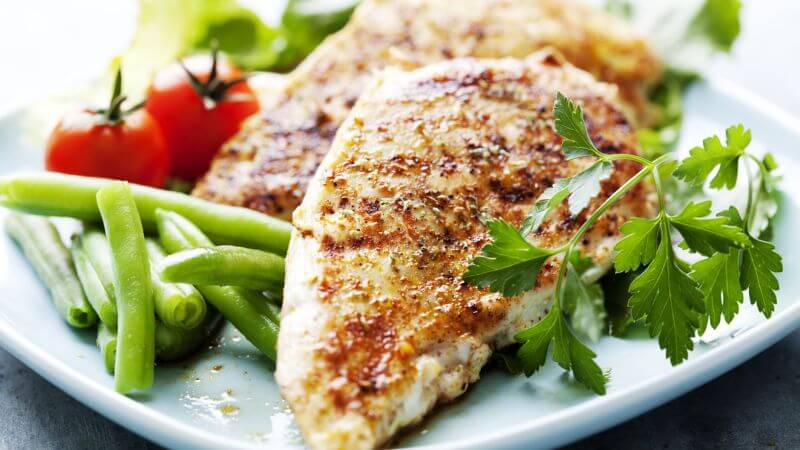
Let’s quickly recap the key takeaways of what we’ve covered so far before moving on to the practical bits of meal prepping.
- The most important aspect of dieting is energy in versus energy out (energy balance).
An energy deficit results in weight loss and a surplus results in weight gain.
- Next in importance is how those calories break down into protein, carbs, and fats.
You want to eat enough protein and tailor your carb and fat intake to your circumstances and goals.
- Last in importance is the actual foods providing the calories and macronutrients.
The reason to eat “clean” foods isn’t because they directly help muscle gain or fat loss. It’s because they provide vital micronutrients that support and preserve health.
Thus, an overall strategy emerges:
- Calculate your caloric intake based on your goal.
- Break it down into “macros.”
- Build a meal plan that provides the majority (80%+) of those calories and macros from nutritious foods.
- Prep and eat the food.
And by the end of this article, you’ll know how to do all of it.
Keep reading. 🙂
How to Figure Out Your Calories and Macros

In the grand scheme of meal prepping, prepping isn’t nearly as important as planning.
You can buy, cut, cook, and store food masterfully, but if you don’t plan your meals (and food intake) properly, you won’t reach your goals.
That’s why we’ve spent a couple thousand words on meal planning before talking about the logistics of meal prepping.
Let’s wrap it up here.
How to Calculate Your Calories for Weight Loss

You now know that you have to eat less energy than you burn to lose weight.
How much less, though?
Many fat loss diets advocate eating very little every day but I don’t recommend that approach.
It causes too many negative side effects, including metabolic slowdown, excessive muscle loss, extreme irritableness, and more.
Instead, I recommend that you feed your body 20 to 25% fewer calories than it burns every day.
This is an aggressive (but not reckless) calorie deficit that will allow you to lose anywhere from 0.5 to 2 pounds per week while also preserving your metabolic health, energy levels, hormone production, mood, and general well-being.
I’m not plucking that advice out of thin air, either.
It’s based on research conducted by scientists at the University of Jyväskylä and my experience working with thousands of people of all ages and circumstances.
Here’s how the study worked:
It was conducted with 20-to-35 year-old national and international level track and field jumpers and sprinters with low levels of body fat (at or under 10%).
They were split into two groups:
- A daily calorie deficit of 300 calories (about 88% of TDEE).
- A daily calorie deficit of 750 calories (about 76% of TDEE).
It’s also worth noting that this group was eating over 2,000 calories per day, which isn’t a “starvation diet” by any means.
Both groups followed a high-protein diet and trained as they normally would.
After 4 weeks, the athletes utilizing a 300-calorie deficit lost very little fat and muscle while the group utilizing a 750-calorie deficit lost, on average, about 4 pounds of fat and very little muscle.
Similar results were seen in another study conducted by scientists at McMaster University, which separated 40 young, overweight men into two groups.
One group was put on the following regimen:
- 40% calorie deficit (about 60% of TDEE)
- High protein intake (2.4 g/kg)
- 6 weightlifting and HIIT workouts per week
And the other group did the same workouts but ate half the protein.
Yes, you read that right.
These people ate just over half of the energy they were burning and did 6 weightlifting and HIIT cardio workouts per week.
If you were to show that protocol to any personal trainer, they would say you’re crazy.
Well, after four weeks, here’s what happened:
- The participants in the high-protein group lost, on average, about 10.5 pounds of fat while gaining about 2.5 pounds of muscle.
- The low-protein group lost about 8 pounds of fat and gained no muscle.
Now, that regimen is far more intense than I would recommend because I guarantee you those people didn’t have a good time.
It does show you just how militant you can be without ruining your body composition, though.
Just how much you can push your body depends on many things, including age, genetics, training history, diet, and sleep hygiene, but I can tell you this:
If you’re a relatively healthy adult, you can do very well with the following setup:
- 3 to 6 hours of heavy weightlifting per week (3 to 5 workouts)
- 1 to 2.5 hours of cardio per week (depending on your goals)
- 20 to 25% calorie deficit with a high-protein and high-carb macro split
This is the basic strategy behind my Bigger Leaner Stronger (men) and Thinner Leaner Stronger(women) programs, by the way, and they work.
Now, the first step of calculating your calories is determining, with some accuracy, how much energy you’re actually burning every day.
Here’s how to do it…
1. Use the following calculator to determine your total daily energy expenditure (TDEE).
Your TDEE is an approximation of how much energy your body burns every day.
It’s comprised of your basal metabolic rate (BMR) plus additional energy burned through moving and processing the food you eat.
This calculator uses the Katch McArdle equation to calculate your approximate TDEE, and in case you’re wondering why the activity multipliers are slightly lower than the standard ones, the reason is simple:
The standard activity multipliers are too high for most people.
That is, with standard Katch McArdle activity multipliers, you’re likely to over-estimate your actual TDEE (and thus unintentionally overeat).
2. Multiply your TDEE by 0.75 to determine your target caloric intake.
This will create a 25% calorie deficit, which will allow you to rapidly (and healthily) lose fat.
How to Calculate Your Macros for Weight Loss
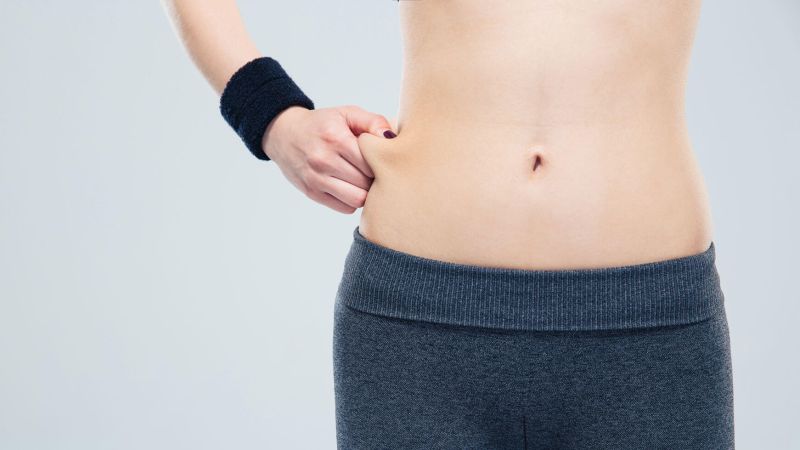
Now that you know how to work out your calories for losing weight, let’s look at macros.
My recommendations are simple:
- Set your protein intake to 1 to 1.2 grams per pound of body weight.
If you’re very overweight (a man with 25%+ body fat or a woman with 30%+), I recommend you set your protein intake at 40% of your total calories.
- If you exercise regularly and don’t have any medical conditions, set your fat intake to 0.2 to 0.25 grams per pound of body weight.
This gives your body what it needs for basic health purposes and leaves plenty of calories for carbs.
- Allot the rest of your calories to carbs.
Trust me.
Eating a lot of carbs does not make you fat (overeating does) nor does it hinder fat loss (overeating does).
Keeping your carb intake high is going to help you in many ways: better workouts, more enjoyable meal plans, better mood and energy levels, and more.
Experience it for yourself and you’ll never look back.
- If you’re sedentary or have a medical condition like diabetes, then you’ll probably do better with fewer carbs.
If you’re sedentary, about 25% of daily calories from carbohydrate should be plenty.
If you have a relevant medical condition, check with your doctor as to your “carbohydrate ceiling.” I’ve seen a lot of variation here, but it seems to be around the same level (20 to 25% of daily calories).
And here’s a handy macro calculation tool that makes setting this up easy:
0
0 kcal
0 kcal
0 kcal
How to Calculate Your Calories for Weight Gain

You know the drill.
First calculate your TDEE and then multiply it to determine your target caloric intake.
In this case, we’re going to multiply it by 1.1 to create a slight (~10%) calorie surplus (about 110% of TDEE).
How to Calculate Your Macros for Weight Gain
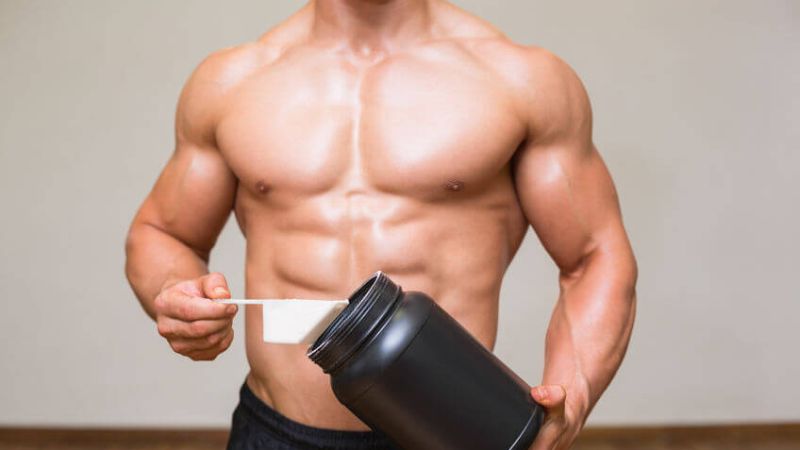
If your goal is maximum muscle growth, then you’ll want to set your macros up a little differently.
Before we get to that, though, you should know that “bulking” works best if your body fat percentage is in the right range.
For guys, this is about 10%. For girls, about 20%.
You can learn more about why here.
With that in place, here’s how I recommend you set up your bulking diet:
- Set your protein to 1 gram per pound of body weight.
You don’t need more than this.
- Set your fat to 0.3 to 0.4 grams per pound of body weight.
This higher fat intake will help you eat more foods you like and hit your daily caloric target.
- Get the rest of your calories from carbs.
Yes, this means eating a lot of carbs and yes, this is going to help tremendously in gaining muscle.
The Perfect Meal Prep Step 2
Plan Your Food
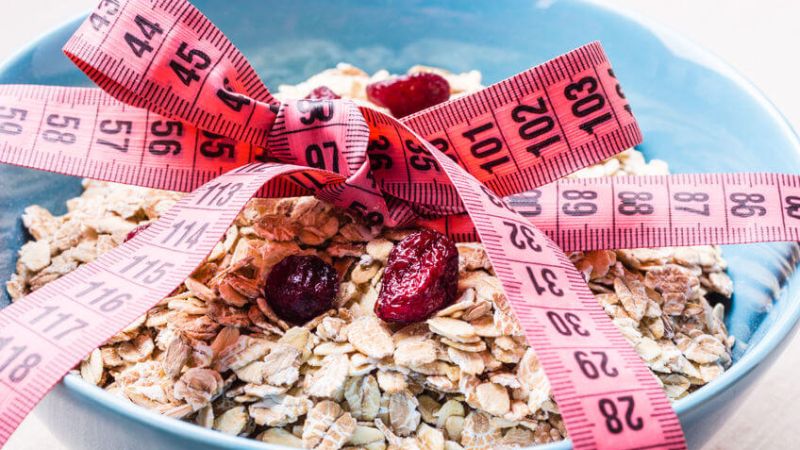
Once you know where your calories and macros need to be, the fun can begin.
In this step, you will turn those dietary targets into actual meal plans that you will enjoy.
Let’s start with a few pointers on how to make the whole process easier to implement:
1. You don’t have to prep it all at once.
Theoretically, it’s best to prep an entire week’s worth of food in one go. (Many people do it every Saturday or Sunday.)
It’s a lot of cutting, chopping, cooking, and packing, but that means it’s also the most time efficient way to get the job done.
If that isn’t feasible for you, though, or just sounds slightly overwhelming, you can do well with two shorter prep sessions per week.
For example, Sundays and Wednesdays works well for many people.
(This also allows you to prep different foods in the second session than the first, if you prefer.)
2. Even a little prepping can make a big difference.
If you don’t have the time or inclination to set aside several hours per week to do an all-inclusive meal prep, that doesn’t mean you can’t benefit from any prep whatsoever.
If all you did was prep the meal(s) that tend to be hardest to control in terms of intake, like lunches and dinners, it can make sticking to your numbers much easier.
3. Don’t experiment with new or fancy recipes.
When you’re new to meal prepping, stick with recipes you’ve made many times and are comfortable with.
This prevents wasted time and money on recipes that turn out bad and allows you to focus on the mechanical details of getting the prep done.
If you want to continue expanding your culinary repertoire, do it outside of your planning and prepping. (Many people leave a couple dinner “slots” open each week for this purpose.)
4. Choose simple “prep-friendly” recipes instead.
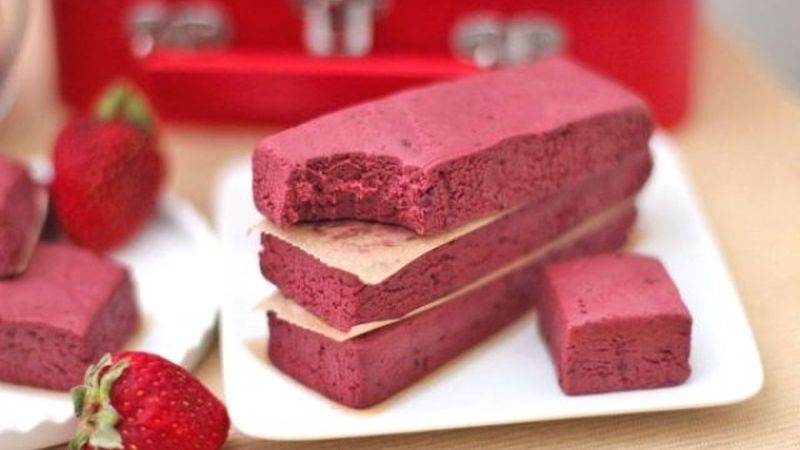
My general advice to people new to this style of eating is to keep it as simple as possible at first.
Don’t opt for gourmet recipes that take considerable time, skill, and money to make, that don’t store and reheat well, and/or are hard to quantify calorically and macronutritionally.
Remember that when it comes to cooking, more–more ingredients, more steps, more time–isn’t always better.
A simple recipe made well beats a poorly executed fancy recipe every time.
This is why the best meal prep recipes are easy and fast to make, require relatively few ingredients, and allow you to prepare large amounts of food with minimal equipment and work.
One-pot recipes are particularly good for this, but you have plenty of other options, like the following:
- 20 Healthy Muffin Recipes That Make Awesome Snacks
- 20 Healthy Protein Bar Recipes So Good It Feels Wrong
- 20 Healthy Chicken Recipes That You’ll Be Excited to Eat
- 20 Meatless High-Protein Recipes That You’ve Got to Try
In fact, many of the hundreds of recipes here on Muscle for Life and over at Legion are (intentionally) perfect for meal prepping.
5. Eat the same foods every meal, every day.
This is the best “diet hack” you can learn because it helps prevent the accidental over- and under-eating that keeps people from losing or gaining weight as desired.
Some people think it sounds grueling, though. Variety is the spice of life, is it not?
If you’re one of those people, fret not.
You might be surprised at how easy it is when you’re eating foods you actually like. You can also swap meals out for other options as you get tired of them.
For example, I know quite a few people that change their menus every 2 to 3 weeks and look forward to every meal, every day.
6. Choose foods that reheat well.
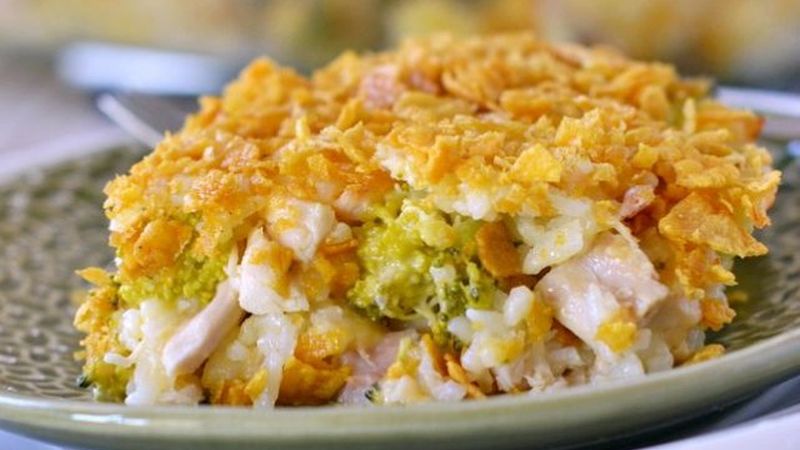
When you reheat food regularly, you quickly learn what does and doesn’t do well the second time around.
Some of my favorite “safe choices” are soups, casseroles, chicken dishes, rice and other grains, veggie medleys, and meatballs.
Options we tend to avoid with clients are foods that don’t microwave well, such as…
7. Fit your meals to your schedule (not vice versa).
When you get your calories, macros, food choices, and meal timing right, you’ll genuinely enjoy your diet.
It won’t even feel like you’re “dieting.”
(And yes, even when you’re restricting your calories for fat loss.)
Get any of these things wrong, though, and you’ll struggle.
We’ve spoken extensively about calories, macros, and food choices already.
This tip relates to meal timing.
Specifically, you should plan your meals according to your preferences and schedule.
If your mornings are crazy and you don’t like eating until lunch, work with it.
If you find yourself lurking around the vending machine in the middle of the afternoon, drop a healthy snack into your plan to keep hunger at bay.
If you like to eat large dinners, accommodate yourself by eating fewer calories earlier in the day.
How to Plan Your Food
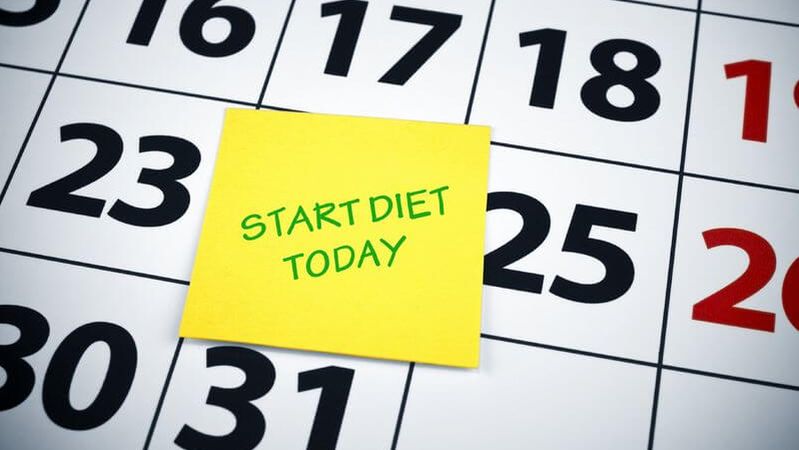
As you know, the key to good meal prepping is good meal planning.
Well, my team has made over 5,000 custom meal plans for clients and here’s how to do it right…
1. Make a List of Foods You Could Enjoy Every Day

List your preferred primary sources of protein, carbs, and fats separately.
For example, my list would look like this:
- Primary Sources of Protein
Chicken, pork, turkey, eggs, lean beef, dairy, protein powder.
- Primary Sources of Carbs
Fruit, potato, sweet potato, vegetables, rice, oatmeal, beans, rice,
- Primary Sources of Fat
Olive oil, chocolate, nuts, meat, dairy, fish oil.
2. Work Out Your Meal Schedule
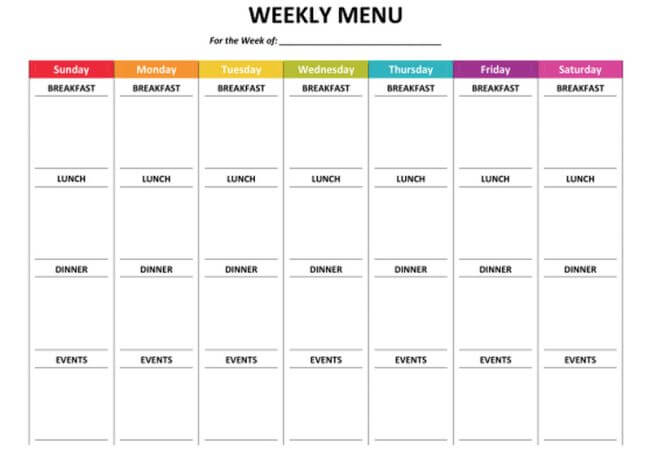
Before you start creating actual meals, you should establish when you’re going to eat and how large or small each meal is going to be.
This way you’ll know what types of recipes and meals will work for you and which won’t.
Remember that when you eat your food generally doesn’t matter. The most important point is that you tailor your meal timing and sizing to your needs.
That said, if you’re serious about weightlifting, there are a few caveats:
- It’s probably a good idea to eat 3 to 5 servings of protein per day (separated by a few hours).
- There’s a fair amount of evidence that eating protein before and after weightlifting workouts can help you build muscle and strength faster.
- There’s also evidence that post-workout carb intake can help as well, mainly due to insulin’s anti-catabolic effects.
So, if you’re lifting weights regularly, I do recommend you…
- Have at least 3 servings of protein per day.
- Have 20 to 40 grams of protein before and after your workouts.
- Have 0.5 to 1 gram of carbs per kilogram of bodyweight within an hour or so of finishing a weightlifting workout.
You’ll probably also find that 30 to 50 grams of carbs before a workout is great for boosting performance.
Beyond those points, though, how you structure your calories and macros is up to you.
3. Come Up With Meal Ideas
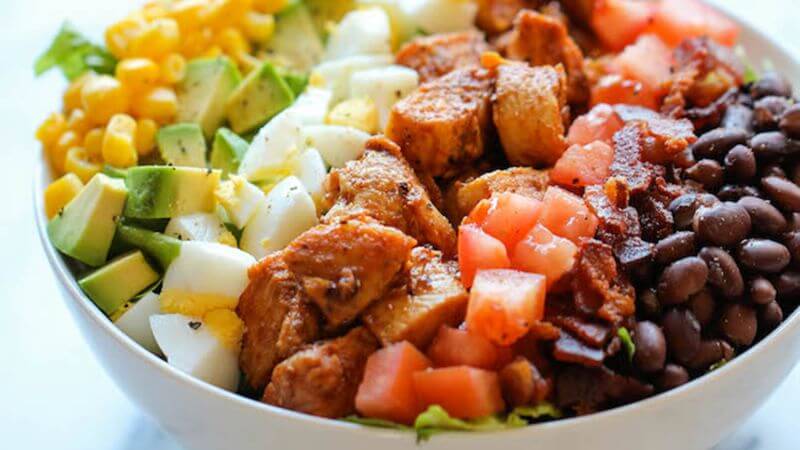
Now that you have a list of your favorite foods and know how your meals are going to be structured, you can start noodling with meals and recipes.
Start by familiarizing yourself with the nutritional facts of individual foods and recipes you like using a site like CalorieKing or CalorieCount.
(You can find a large collection of meal-prep-friendly recipes both here at Muscle for Life and over at Legion.)
As you’ll soon see, some foods and recipes will be too calorically “expensive” or macronutritionally imbalanced to fit your needs, but others will work nicely.
Make a list of those that seem like good candidates for your meal planning.
4. Create Your Meal Plan
The goal in this step is to create a perfect one-day meal plan.
The most important point here is that it’s within 50 calories of your target intake if you’re cutting and within 100 calories if you’re bulking.
This means you’ll have to tinker with food choices and portions, which is why I like to use Google Sheets for meal planning.
Here’s my current maintenance plan, for example:
If you want to set your plan up in the same way, you can download my sheet as an Excel sheet or copy it to your Google Drive.
When creating your meal plan, you’ll probably find it helps to start with your largest meals first and then tackle your smaller meals.
For example, if you want to begin every day with a large breakfast, start there.
Look over your food preferences and breakfast recipes, put together a meal that you think will be satisfying, and enter the calories and macros into the spreadsheet.
Then move on the second-largest meal, and continue this way meal by meal, keeping an eye on how many calories and macros you have allocated and how many you have left.
Eventually, you’ll have created something like this:
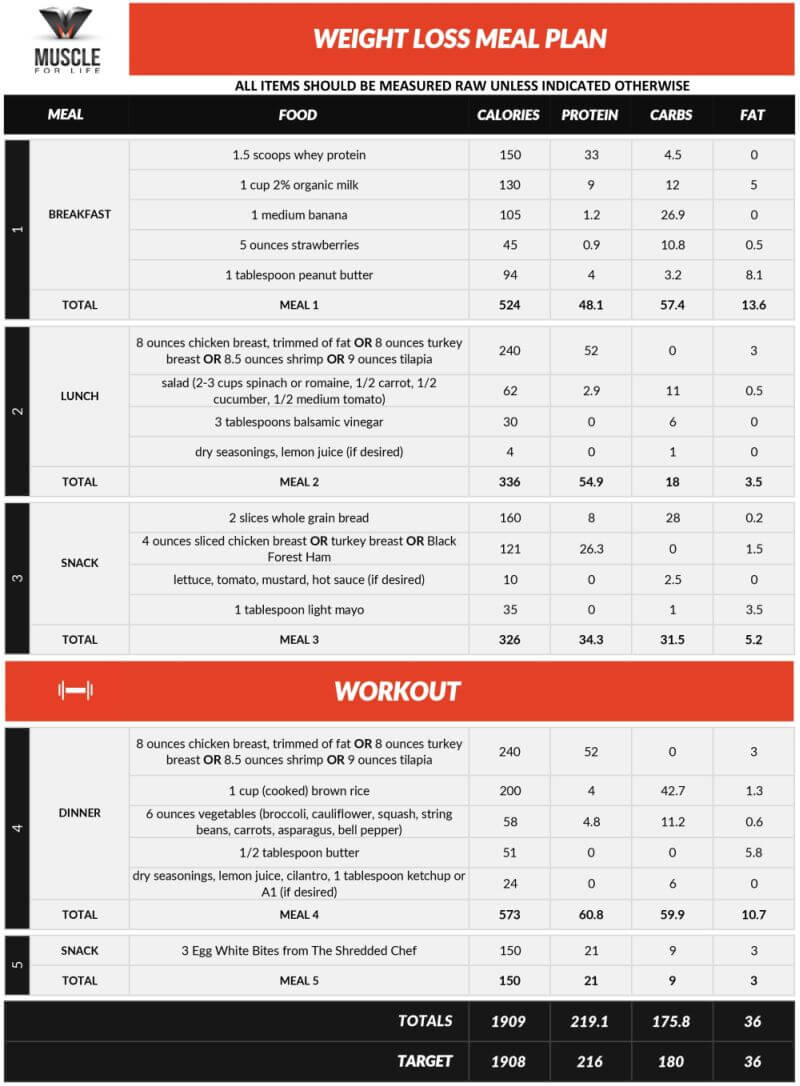
(This is an actual custom meal plan created for a client.)
5. OPTIONAL: Create alternate meals.
If you’re new to meal prepping, I recommend you skip this step.
Stick with your meal plan that you just created and eat those foods every meal, every day.
This is the easiest way to avoid problems.
If, however, you really want some variety or just feel up to the challenge, you can create alternate meals.
The best way to keep this easy is to work within the caloric and macronutritional restraints the meals you’re replacing.
Don’t try to shuffle calories and macros around for different meal choices.
For example, if your breakfast currently contains 30 grams of protein, 50 grams of carbs, and 15 grams of fat, work with those numbers when choosing alternate meals.
In this case, I would probably look to something like oatmeal and muffins because they tend to be similar nutritionally. (Protein pancakes, too.)
The Perfect Meal Prep Step 3
Choose Your Prep Day(s)
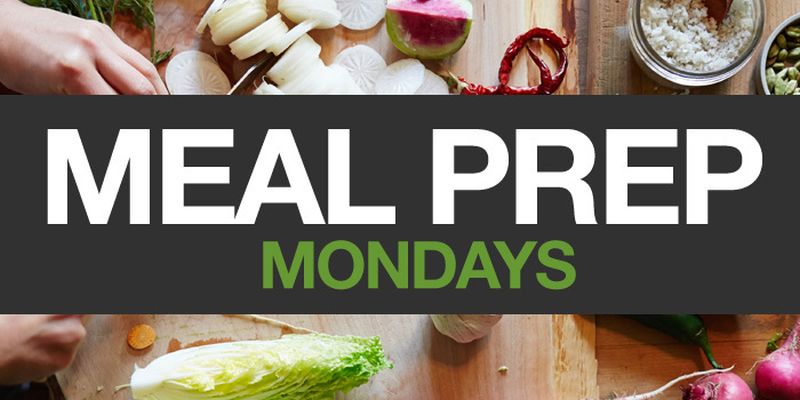
Now that you know what food you’re going to make, it’s time to decide when you’re going to make it.
How long you’ll need will depend on your actual meal plan, but it shouldn’t take more than a few hours to cut, cook, and store everything.
As I mentioned earlier, many people do all their prep in one afternoon per week, but you can split this into two sessions if that doesn’t work for you.
If you’re going to go with one day per week, I recommend Sundays because it doesn’t interfere with your Friday and Saturday shenanigans and it helps ensure your food isn’t funky by Thursday or Friday.
The Perfect Meal Prep Step 4
Grocery List & Shopping
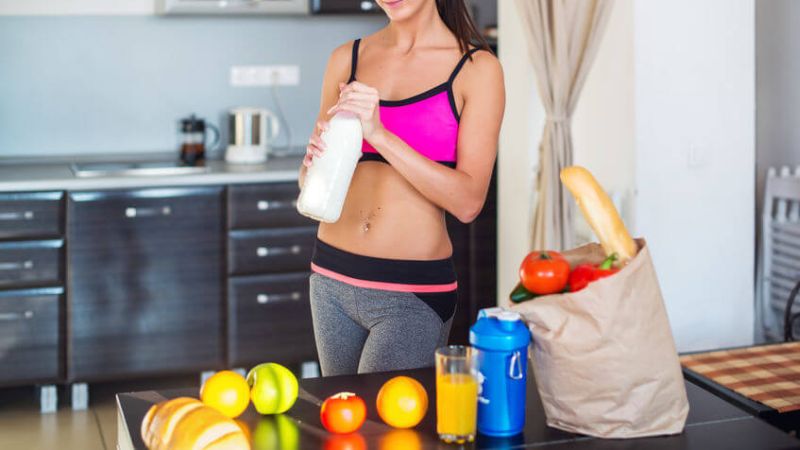
When it comes time to shop and cook, you want to get it done as quickly and efficiently as possible (kind of the point of meal prepping).
An organized grocery list helps, and it requires just two steps:
1. Determine what you’ll need to buy.
Work out what you need to buy to follow your meal plan for one day and multiply by as many days as you’ll be prepping for.
If you have alternate meals in your planning, adjust accordingly.
(You might as well add everything else you need to buy at the grocery store too.)
I recommend you create your list digitally so it’s easier to organize.
2. Organize your list by store department.
This will streamline your shopping experience by ensuring you only need to take one trip down each aisle.
Here are the categories you should separate your list into:
- Bread, Cereal, Rice, and Pasta
- Vegetables
- Fruits
- Milk, Yogurt and Cheese
- Meat, Poultry, Fish, Dry Beans, Eggs and Nuts
- Fats, Oils and Sweets
- Staples, Condiments and Miscellaneous Foods (spices, baking powder, etc.)
- Health and Beauty Products
- Household Items (laundry soap, light bulbs, etc.)
The Perfect Meal Prep Step 5
Cutting, Cooking, & Storing
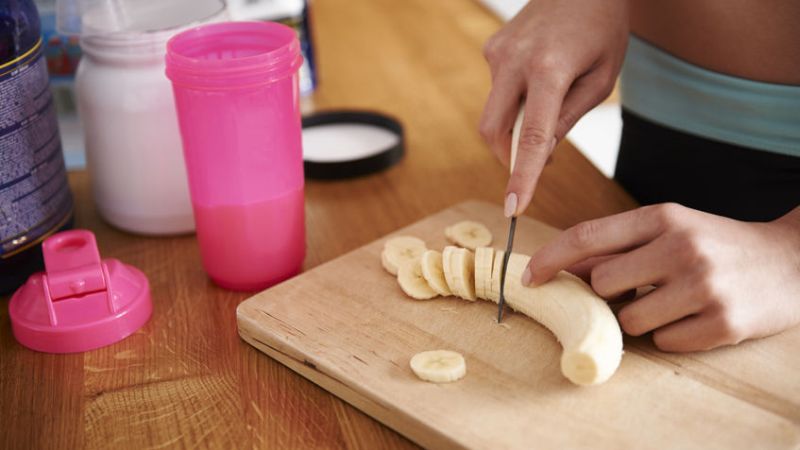
The big day has come. It’s time to sow the seeds of all your planning.
The basic idea here is to cut, cook, and prepare everything you can so you can store and eat it as easily as possible.
This is the type of scene you’re going for:
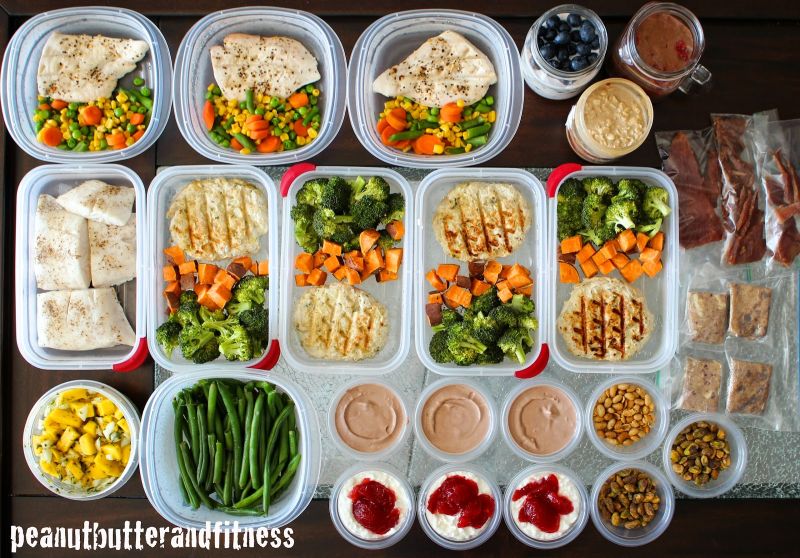
In terms of actually doing that, it’s fairly straightforward.
Here are some tips that will help.
You’re going to want a food scale to make sure your calories and macros are accurate.
Weighing your foods before you cook them is very important because of variability that can occur with cooking.
You weigh things after they’re cooked/prepared to determine portions.
For example, if you need to cook a pound of chicken for four meals, you would first weigh out 454 grams raw, cook it all together, and then divide it into four (relatively) equal portions of about 114 grams.
Do all your washing, cutting, and chopping in one go and then move on to cooking and finally storing.
This is faster than repeating the process meal by meal.
You don’t have to cook everything if you’d prefer to have certain foods freshly cooked.
For example, some people like to trim their meats of fat and chop their veggies and then store them in bags raw (freezer or fridge, depending on when they will be cooked) for quick stir-fry dinners.
Roast different vegetables with the same cooking time.
Some vegetables cook quickly, like asparagus, mushrooms, and cherry tomatoes, while others take longer, like carrots, cauliflower, and potatoes.
Pair your veggies up based on cooking times and roast them together.
Don’t underestimate the utility of protein-rich snacks.
High-protein snacks are perfect for on-the-go eating and/or beating the midday munchies.
Here are a bunch of options:
- 20 Protein Cookies That Will Beat Your Shakes Any Day
- 20 Protein Powder Recipes You Won’t Have to Choke Down
- 20 Healthy Protein Bar Recipes So Good It Feels Wrong
Cook your meat three different ways in the same pan.
Just because you’re going to eat chicken every day doesn’t mean it has to be the exact same.
Use aluminum foil to create dividers in your pan and you can make three flavors in one go:
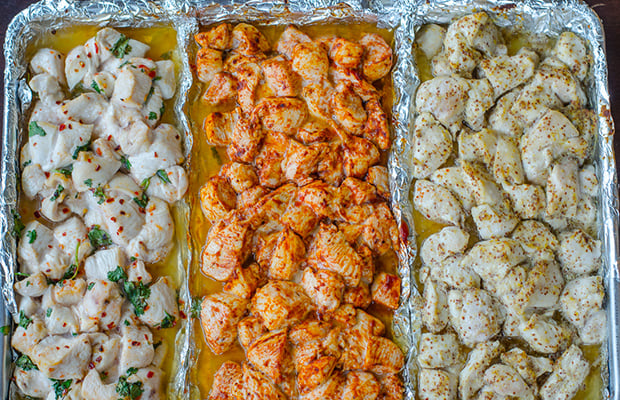
You can make hardboiled eggs in the oven.
Hardboiled eggs are a perfect meal prep food.
They’re tasty, easy to make, and nutritious.
The problem, though, is you can only fit a handful in a pot, and making several pots can take quite a bit of time.
You can avoid this by baking the eggs in a muffin tin.
Heat your oven to 350 degrees, load the tin up, bake for 30 minutes, and then place the eggs in a large bowl of ice water for about 10 minutes, and you’re done.
Get compartmented containers for separating the components of your meals.
They’re perfect for keeping your protein, starches, veggies, etc. separate and for reheating, and they’re easy to clean and store.
Trust me. You’ll want them.
Here’s a good inexpensive set:
If you’re going to be microwaving your meals, I recommend you go with glass (to avoid chemicals leaching from the plastic).
Here’s a good set from the same company:
Prevent “mindless eating” with “micro-portioning.”
Let’s face it:
When you have a big bag of goodies in your lap, it can be hard to stop eating.
Well, if you have small edibles in your meal plan like pretzels, nuts, or veggies, store them in smaller portable container or jars or little bags.
Here’s a good set of small containers:
Consider using Mason jars to store your salads.
If you’ve tried to mix a salad and eat it later, you know the problem: it turns into a soggy mush.
Mason jars are a perfect one-container solution.
Put the dressing at the bottom of the jar, then layer in the sturdier ingredients, and save the greens for the top, and voila, you have a fresh salad on demand.
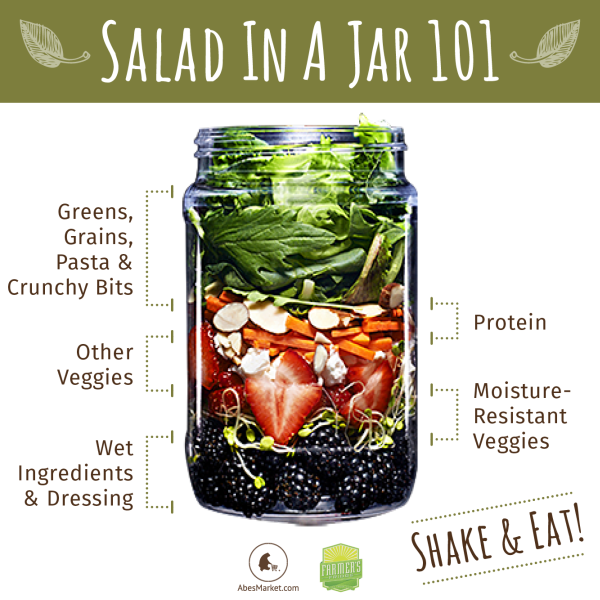
Pack a paper towel at the top if you’re storing the salad for several days.
The Perfect Prep Step 6
Reheating the Right Way
If your idea of reheated food is dry, unappetizing fodder, this section is for you.
There’s no denying that some meals are much better fresh, but most shouldn’t lose too much of their pizzazz the second time around.
Here are three easy tips for better reheating:
1. Drizzle Water on Top
Flick water on top of the food so the steam created isn’t sucked out of it, leaving you with a dry, rubbery mess.
2. Don’t Microwave Everything
Microwaving is most people’s default for reheating because it’s quick and easy.
It’s also better suited to some foods more than others.
The key is moisture levels in the food you’re cooking.
Foods that are consistently moist throughout like rice, vegetables, and soups, microwave well. Foods that aren’t, like those that are crisp on the outside but moist on the inside, don’t.
When the microwave isn’t ideal, opt for an oven or toaster oven instead. Broiling can be particularly good (just keep a close eye on it to prevent burning).
3. Don’t “Set and Forget” the Microwave
If you pop meal in the microwave for a few minutes straight, there’s a good chance it’s going to be unevenly cooked.
Instead, after the first minute or so, remove the dish, give it a stir, and resume cooking.
What About Supplements?
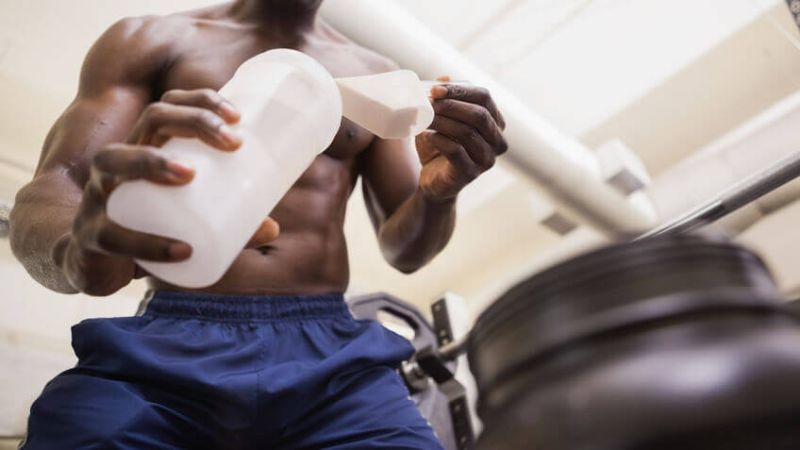
I saved this for last because, quite frankly, it’s far less important than proper diet and training.
You see, supplements don’t build great physiques–dedication to proper training and nutrition does.
Unfortunately, the workout supplement industry is plagued by pseudoscience, ridiculous hype, misleading advertising and endorsements, products full of junk ingredients, underdosing key ingredients, and many other shenanigans.
Most supplement companies produce cheap, junk products and try to dazzle you with ridiculous marketing claims, high-profile (and very expensive) endorsements, pseudo-scientific babble, fancy-sounding proprietary blends, and flashy packaging.
So, while workout supplements don’t play a vital role in building muscle and losing fat, and many are a complete waste of money…the right ones can help.
The truth of the matter is there are safe, natural substances that have been scientifically proven to deliver benefits such as increased strength, muscle endurance and growth, fat loss, and more.
As a part of my work, it’s been my job to know what these substances are, and find products with them that I can use myself and recommend to others.
Finding high-quality, effective, and fairly priced products has always been a struggle, though.
That’s why I took matters into my own hands and decided to create my own supplements. And not just another line of “me too” supplements–the exact formulations I myself have always wanted and wished others would create.
I won’t go into a whole spiel here, but if you want to learn more about my supplement line, check this out. (And if you’d like to know exactly what supplements to take to reach your fitness goals, take the Legion Supplement Finder Quiz.)
For the purpose of this article, let’s just quickly review the supplements that are going to help you get the most out of your diet and training in general.
Creatine
Creatine is a substance found naturally in the body and in foods like red meat. It’s perhaps the most researched molecule in the world of sport supplements–the subject of hundreds of studies–and the consensus is very clear:
Supplementation with creatine helps…
You may have heard that creatine is bad for your kidneys, but these claims have been categorically and repeatedly disproven. In healthy subjects, creatine has been shown to have no harmful side effects, in both short- or long-term usage. People with kidney disease are not advised to supplement with creatine, however.
If you have healthy kidneys, I highly recommend that you supplement with creatine. It’s safe, cheap, and effective.
In terms of specific products, I use my own, of course, which is called RECHARGE.
RECHARGE is 100% naturally sweetened and flavored and each serving contains:
- 5 grams of creatine monohydrate
- 2100 milligrams of L-carnitine L-tartrate
- 10.8 milligrams of corosolic acid
This gives you the proven strength, size, and recovery benefits of creatine monohydrate plus the muscle repair and insulin sensitivity benefits of L-carnitine L-tartrate and corosolic acid.
Protein Powder
You don’t need protein supplements to gain muscle, but, considering how much protein you need to eat every day to maximize muscle growth, getting all your protein from whole food can be impractical.
That’s the main reason I created (and use) a whey protein supplement. (There’s also evidence that whey protein is particularly good for your post-workout nutrition.)
WHEY+ is 100% naturally sweetened and flavored whey isolate that is made from milk sourced from small dairy farms in Ireland, which are known for their exceptionally high-quality dairy.
I can confidently say that this is the creamiest, tastiest, healthiest all-natural whey protein powder you can find.
PHOENIX Fat Burner
With the weight loss market valued at a staggering $60.5 billion and more than one-third of U.S. adults obese, it’s no surprise that there’s a glut of “fat burners” for sale these days.
And for the same reasons it’s also no surprise that fat burners are some of the most expensive supplements on the shelves and feature some of the loudest marketing claims, often making big promises of “scientifically proven” rapid fat loss.
The reality is most “fat burners” are junk but there are a handful of natural, safe substances that have been scientifically proven to accelerate fat loss. And that’s why I created PHOENIX.
PHOENIX’s caffeine-free formulation is helps you burn fat faster in three different ways:
- It dramatically increases metabolic speed.
- It amplifies the power of fat-burning chemicals produced by your body.
- It increases the feeling of fullness from food.
It accomplishes this through clinically effective dosages of several ingredients, including…
- Synephrine. This increases both basal metabolic rate and lipolysis, inhibits the activity of certain fat cell receptors that prevent fat mobilization, and increases the thermic effect of food (the “energy cost” of metabolizing food).
- Naringin. This stimulates the production of a hormone called adiponectin, which is involved in the breakdown of fat cells, and that it activates a type of receptor in fat cells that regulates fat mobilization (the PPARα receptor).
Through these mechanisms, naringin also works synergistically with synephrine and hesperidin to further accelerate the basal metabolic rate.
- Hesperidin. Like naringin, this also stimulates the production of adiponectin and activates the PPARa receptor. It also improves blood flow and reduces the inflammation of blood vessels.
- Epigallocatechin gallate (EGCG). This inhibits the activity of a different enzyme also responsible for breaking down neurotransmitters that induce lipolysis. It has also been shown to reduce abdominal fat in particular.
- Forskolin. This increases blood plasma and intracellular levels of a molecule known as cAMP. When cAMP is high, it signifies a lack of ATP (the most basic form of cellular energy in the body) and thus initiates a process to make more ATP by burning through energy reserves (body fat).
Research has show that supplementation with forskolin accelerates fat loss and increases testosterone levels.
- And more…
The bottom line is if you want to lose fat faster without pumping yourself full of stimulants or other potentially harmful chemicals…then you want to try PHOENIX.
Pre-Workout Drink
There’s no question that a pre-workout supplement can get you fired up to get to work in the gym. There are downsides and potential risks, however.
Many pre-workout drinks are stuffed full of ineffective ingredients and/or minuscule dosages of otherwise good ingredients, making them little more than a few cheap stimulants with some “pixie dust” sprinkled in to make for a pretty label and convincing ad copy.
Many others don’t even have stimulants going for them and are just complete duds.
Others still are downright dangerous, like USPLabs’ popular pre-workout “Jack3d,”which contained a powerful (and now banned) stimulant known as DMAA.
Even worse was the popular pre-workout supplement “Craze,” which contained a chemical similar to methamphetamine.
The reality is it’s very hard to find a pre-workout supplement that’s light on stimulants but heavy on natural, safe, performance-enhancing ingredients like beta-alanine, betaine, and citrulline.
And that’s why I made my own pre-workout supplement. It’s called PULSE and it contains 6 of the most effective performance-enhancing ingredients available:
- Caffeine. Caffeine is good for more than the energy boost. It also increases muscle endurance and strength.
- Beta-Alanine. Beta-alanine is a naturally occurring amino acid that reduces exercise-induced fatigue, improves anaerobic exercise capacity, and can accelerate muscle growth.
- Citrulline Malate. Citrulline is an amino acid that improves muscle endurance, relieves muscle soreness, and improves aerobic performance.
- Betaine. Betaine is a compound found in plants like beets that improves muscle endurance, increases strength, and increases human growth hormone and insulin-like growth factor 1 production in response to acute exercise.
- Ornithine. Ornithine is an amino acid found in high amounts in dairy and meat that reduces fatigue in prolonged exercise and promotes lipid oxidation (the burning of fat for energy as opposed to carbohydrate or glycogen).
- Theanine. Theanine is an amino acid found primarily in tea that reduces the effects of mental and physical stress, increases the production of nitric oxide, which improves blood flow, and improves alertness, focus, attention, memory, mental task performance, and mood.
And what you won’t find in PULSE is equally special:
- No artificial sweeteners or flavors..
- No artificial food dyes.
- No unnecessary fillers, carbohydrate powders, or junk ingredients.
The bottom line is if you want to know what a pre-workout is supposed to feel like…if you want to experience the type of energy rush and performance boost that only clinically effective dosages of scientifically validated ingredients can deliver…then you want to try PULSE.
Again, if you feel confused about what supplements you should take to reach your goals, take the Legion Supplement Finder Quiz to learn exactly what supplements are right for you. It’s the best way to ensure you get the most out of your supplement regimen.
The Bottom Line on Meal Prepping

We’ve covered a lot in this article, so if you feel a bit flat-footed, I understand.
There really aren’t that many moving parts, though.
- You work out your calories and macros.
- You make a meal plan that you’ll enjoy.
- You shop, cook, and store.
- You eat.
And you repeat and learn and improve as you go.
Happy prepping!
What’s your take on meal prep? Have anything else to share? Let me know in the comments below!
Scientific References +
- Phillips SM, van Loon LJC. Dietary protein for athletes: From requirements to optimum adaptation. J Sports Sci. 2011;29(SUPPL. 1). doi:10.1080/02640414.2011.619204
- Longland TM, Oikawa SY, Mitchell CJ, Devries MC, Phillips SM. Higher compared with lower dietary protein during an energy deficit combined with intense exercise promotes greater lean mass gain and fat mass loss: a randomized trial. Am J Clin Nutr. 2016;103(3):738-746. doi:10.3945/ajcn.115.119339
- Huovinen HT, Hulmi JJ, Isolehto J, et al. Body composition and power performance improved after weight reduction in male athletes without hampering hormonal balance. J Strength Cond Res. 2015;29(1):29-36. doi:10.1519/JSC.0000000000000619
- Phillips SM, van Loon LJC. Dietary protein for athletes: From requirements to optimum adaptation. J Sports Sci. 2011;29(SUPPL. 1). doi:10.1080/02640414.2011.619204
- Halton TL, Hu FB. The effects of high protein diets on thermogenesis, satiety and weight loss: A critical review. J Am Coll Nutr. 2004;23(5):373-385. doi:10.1080/07315724.2004.10719381
- Clifton PM, Bastiaans K, Keogh JB. High protein diets decrease total and abdominal fat and improve CVD risk profile in overweight and obese men and women with elevated triacylglycerol. Nutr Metab Cardiovasc Dis. 2009;19(8):548-554. doi:10.1016/j.numecd.2008.10.006
- Krieger JW, Sitren HS, Daniels MJ, Langkamp-Henken B. Effects of variation in protein and carbohydrate intake on body mass and composition during energy restriction: A meta-regression. Am J Clin Nutr. 2006;83(2):260-274. doi:10.1093/ajcn/83.2.260
- Mettler S, Mitchell N, Tipton KD. Increased protein intake reduces lean body mass loss during weight loss in athletes. Med Sci Sports Exerc. 2010;42(2):326-337. doi:10.1249/MSS.0b013e3181b2ef8e
- Lemon PWR. Beyond the Zone: Protein Needs of Active Individuals. J Am Coll Nutr. 2000;19:513S-521S. doi:10.1080/07315724.2000.10718974
- Energy Balance and Obesity, Healthy Weight Basics, NHLBI, NIH. https://www.nhlbi.nih.gov/health/educational/wecan/healthy-weight-basics/balance.htm. Accessed January 23, 2020.
- Hand GA, Shook RP, Paluch AE, et al. The energy balance study: The design and baseline results for a longitudinal study of energy balance. Res Q Exerc Sport. 2013;84(3):275-286. doi:10.1080/02701367.2013.816224

